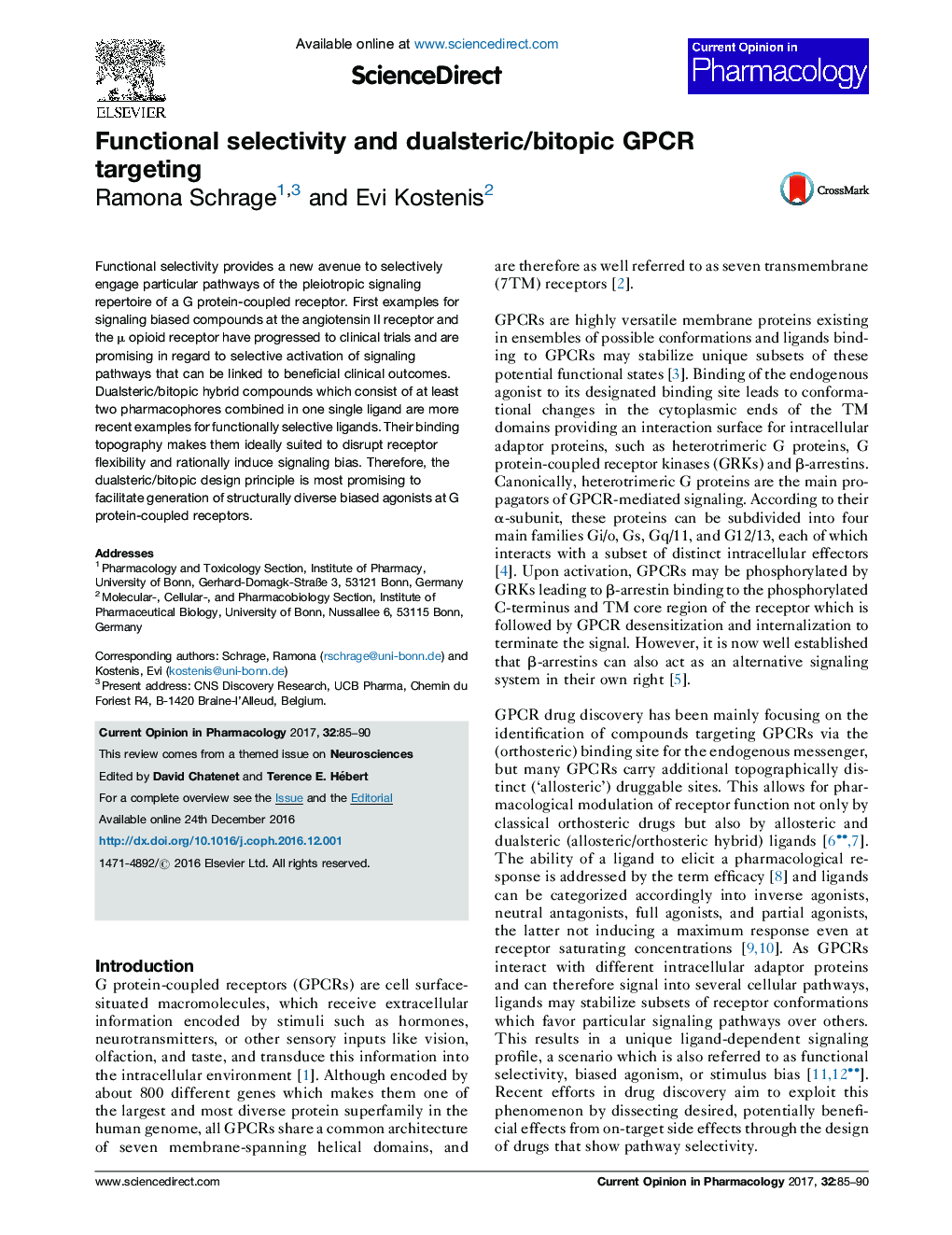| Article ID | Journal | Published Year | Pages | File Type |
|---|---|---|---|---|
| 5554318 | Current Opinion in Pharmacology | 2017 | 6 Pages |
â¢GPCR-linked signaling is pleiotropic and involves multiple intracellular pathways.â¢Biased ligands favor particular signaling pathways at the expense of others.â¢Functional selectivity can avoid non-desired on-target effects.â¢Dualsteric/bitopic ligands restrain conformational flexibility of GPCRs.â¢Dualsteric/bitopic compounds are ideally suited to induce functional selectivity.
Functional selectivity provides a new avenue to selectively engage particular pathways of the pleiotropic signaling repertoire of a G protein-coupled receptor. First examples for signaling biased compounds at the angiotensin II receptor and the μ opioid receptor have progressed to clinical trials and are promising in regard to selective activation of signaling pathways that can be linked to beneficial clinical outcomes. Dualsteric/bitopic hybrid compounds which consist of at least two pharmacophores combined in one single ligand are more recent examples for functionally selective ligands. Their binding topography makes them ideally suited to disrupt receptor flexibility and rationally induce signaling bias. Therefore, the dualsteric/bitopic design principle is most promising to facilitate generation of structurally diverse biased agonists at G protein-coupled receptors.
